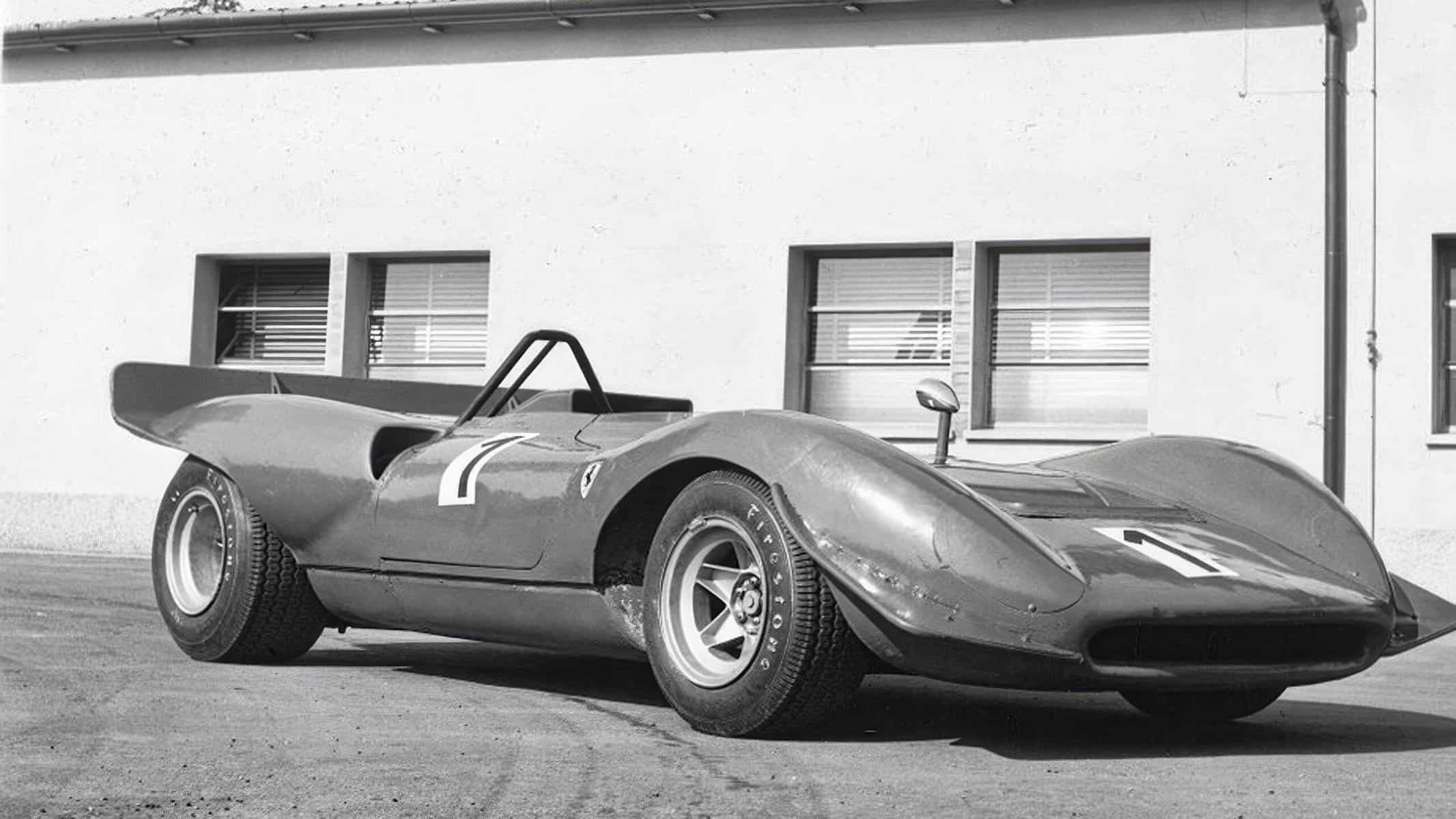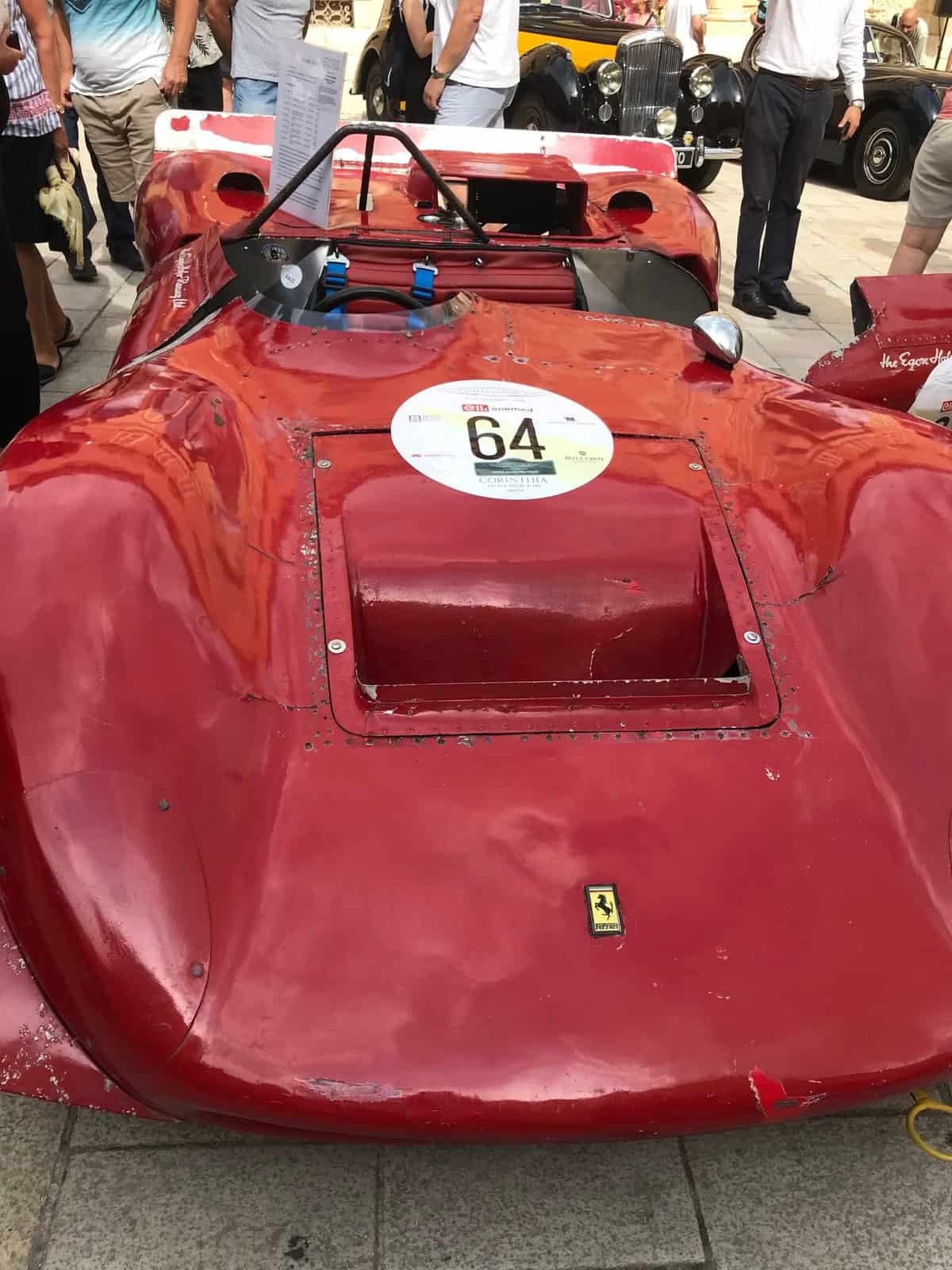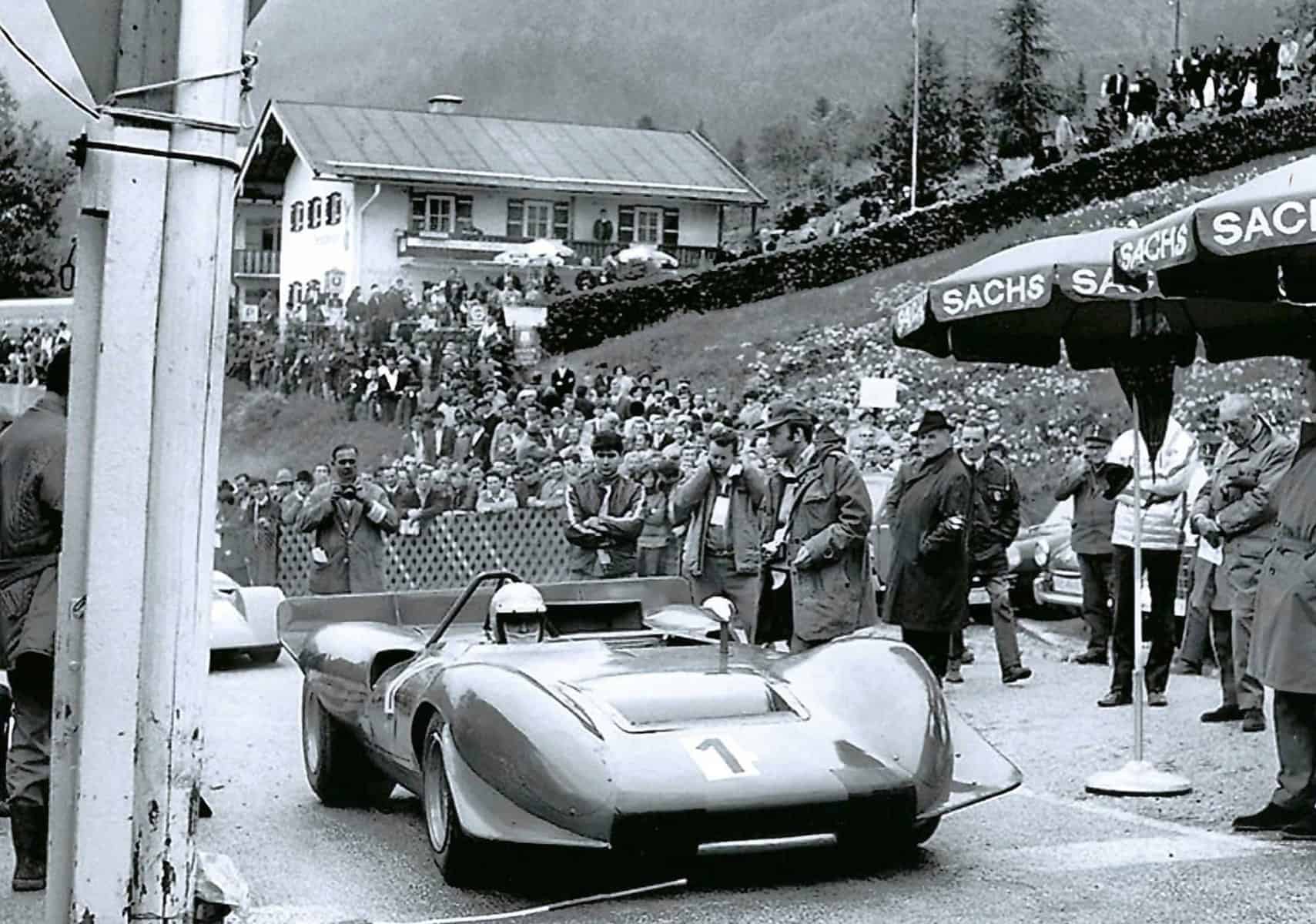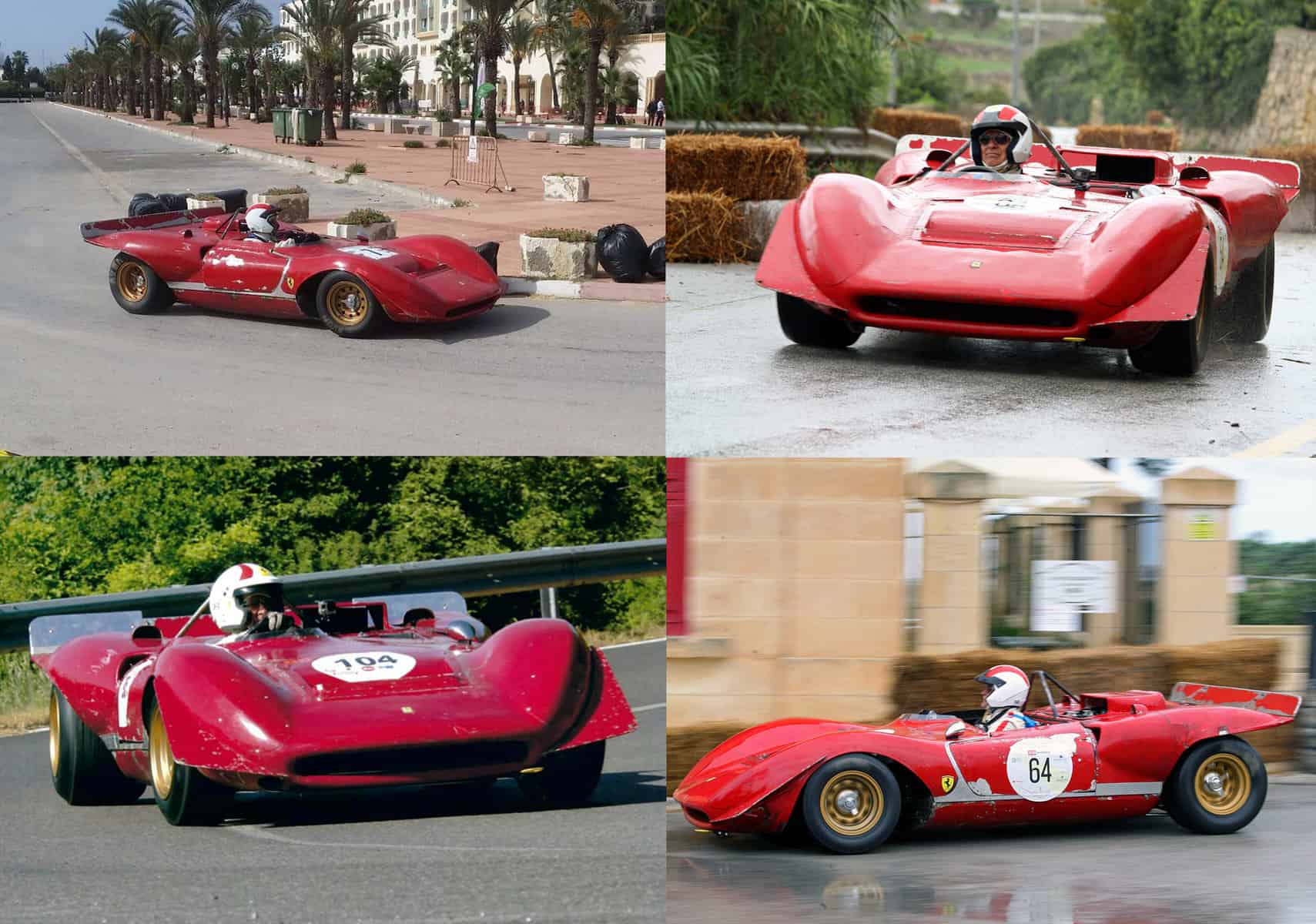
Ferrari 212 E Montagna
The strange and remarkable story of an extraordinary car
BY: PETER STEVENS
Peter Stevens is one of the world’s best-known and most sought-after automotive designers. He is a consultant designer who is committed to the vital importance of design education. Alongside his consultancy, he lectures internationally and was until recently Visiting Professor at London’s Royal College of Art. Professor Stevens is well known as the designer of the acclaimed McLaren F1 road car which marked a paradigmatic shift in high performance car design. Produced between 1993 and 1997, the car remains extraordinarily influential.
Sadly, in these times, it is not uncommon to hear of classic cars that have been stolen. Even worse, the chance of the owner being reunited with the car is unlikely. For a unique, one-off car, this would almost certainly never happen.
In the late 1960s the European Hill Climb Championship was a very important and popular series. Porsche had won the championship nine times in eleven years with 910 and 907 models. They beat Ferrari for two years running in 1966 and 1967. Ferrari decided to build a special car for the 1968 series, work started in 1967 under the direction of Mauro Forghieri. The car was not ready for 1968 but was unveiled in early ’69 for that year’s championship. Ferdinand Piëch, head of motorsport at Porsche took the earlier announcement from Ferrari very seriously and with some urgency he set his team to design and develop an equally special car, the 909 Bergspyder. The 909 was incredibly light, 384kg (849 lbs), it used exotic materials such as Beryllium, Titanium, Magnesium and silver; most were both expensive and dangerous. It was said to have a 0-60 mph time of just 2.4 seconds, still remarkable today. The motor, the type 771, was a derivative of the earlier Porsche Formula 1 engine, it produced 275 bhp from its 2.0 liter, normally aspirated, flat-eight layout. The 909 was not the great success that Pïech hoped for, according to works driver Gerhard Mitter it was “both a handful to drive and unreliable,” he won the 1968 Hillclimb Championship in an earlier 910/8 which he much preferred.
However, Ferrari was ready for the 1969 championship. Its unique car was named the Sport 2000 Montagna (Hill climb car). It was then renamed the 212 E Montagna; it was a one-off, open spyder with a remarkably lightweight glass fiber body designed by Edmondo Casoli, who was also responsible for the Ferrari 330 P3 and P4, this was fitted to a Dino 206 S tube frame chassis (chassis 020 for the development car). The engine was a unique 2-liter, 48 valve, flat-12. It was derived from the 1964/5, 1512 Formula 1 engine. The design was by Stefano Jacoponi, this Tipo 232 engine initially produced 280-290 bhp but for 1969 it had been increased to 300-320 bhp. Although the power was greater than the Porsche 909 the weight was considerably more. 500 kg (1,000 lbs) was still impressive.
Instead of choosing one of his own factory drivers Enzo Ferrari chose a young Swiss driver, Peter Schetty. Ferrari described him as “a young, wealthy Swiss, backed by a family that owned a textile business that wanted to see him run the company with his father.” He had come second in the European Hillclimb Championship in 1966, in the GT class. His father persuaded him to finish his university degree and having done so he signed with the Abarth factory in 1967, at the age of 25. He had a successful season in 1968 where Enzo Ferrari had spotted his talent; much to Schetty’s surprise he was called to Maranello and offered a factory contract for both testing and development of the 212 E plus the role of works driver in the 1969 hillclimb championship. He was to have the support of Ferrari engineer Gianni Marelli, plus two mechanics who made up the little team that would contest the European Championship. Schetty and Chris Amon had tested the car at the Modena Autodromo and the Vallelunga Circuit where aerodynamic modifications were made, and further weight reduction was achieved, the car seemed very promising.
1969 was everything that Ferrari could have hoped for – Schetty won all seven of the hill-climbs he ran in, he had won the Championship before the final event, and the team chose not to enter the last event, the Gaisberg-Rennen. Most of the championship venues were up to twenty kilometres in length (13 miles), a competitive time was usually around ten minutes, Schetty was often between thirty and fifty seconds ahead of his nearest rival, Arturo Merzario in a factory Abarth! Peter Schetty drove for Ferrari in 1970 in sports car races but “the old man” clearly saw what a bright chap the champion was. He was offered a test and development role as well as being Team Manager for the sportscar team before returning to the family business in 1973
Ferrari decided not to enter the 212 E in the 1970 championship, instead they sold the car to a couple of experienced privateers. The 12-cylinder engine seems to have been removed and installed in a new chassis, 0862 with a revised body designed by Ferrari’s son Piero Lardi Ferrari which was driven in hill climbs by Edoardo Lualdi-Gabardi in 1971. He won 5 events but not the championship.
Meanwhile chassis 020 and its original body were sold to Austrian racer Egon Hofer who had raced in a number of 250 GT SWB Ferraris. I was fortunate enough to be introduced to Hofer by my very good, Malta based, friend Mark Grenside a couple of years ago, Mark and Egon have been good friends for years and this is the story that Egon tells. In 1967 he raced a Ferrari 250 in the Targa Florio, the last time a 250 raced in a World Championship event. He already owned a Dino 206 (chassis number 016) fitted with a less than elegant cut down aluminium body and decided to put the lighter and more aerodynamic 212 E body onto the 206. He gave this work to the famous Modena body maker Piero Drogo for his Carrozzeria Sports Cars to rebuild the car. Drogo was responsible for most of Ferrari’s sports race cars. Egon put the original chassis into storage. “The car was very light and agile, very good for these type of events,” says Hofer “But the engine needed to be faster, so I bought a Ferrari 2-liter Formula 2 V6 engine in Switzerland, which I never fitted.” He says that he hoped it would be a significant improvement over the Dino but nowhere near the 320 bhp of the original flat-12. Hofer was very pleased with his new race car and was flattered when two of his cars were invited to a major car show in Munich; the hillclimb car and his 3-liter Serenissima Formula 1 car. The cars were supposed to be back in Austria on the following Monday morning, “But I felt that something was wrong when neither car was back by Friday.” He drove to Munich to make a report to the police, only to discover that a number of other owners had the same problem, all with the same delivery driver. The thief was tracked down, arrested, and sent to prison for eighteen months – but he absolutely refused to say what had happened to the cars.
After many months, Hofer feared that he would not see his cars again and began systematically contacting friends in motorsport to spread the word about the Ferrari. “Even in 1970, such a car could not be raced anywhere without attracting big attention,” he says. During his research he discovered that the truck driver was in league with a dealer who would sell stolen cars on. Unfortunately, in Europe, a car sold through a dealer becomes the legal property of the new owner. Thus, any chance of Hofer getting his cars back seemed very unlikely.
Egon Hofer semi-retired from racing soon after this but in 1975 he returned to racing with a Maserati Tipo 63. In 2018, Egon received an extraordinary phone call from a good friend, who asked him if he had ever sold a car in Sweden. Knowing that he never had, his friend said that, after buying an early race car from an enthusiast, he was shown a very tired-looking car that seemed to be a Ferrari that, intriguingly, had Egon’s name on it! Hofer flew to Sweden the next day and what he had originally feared turned out to be true. The car had been separated to make a replica 206 S in around 2008. But the original bodywork and other parts were still with the owner who was very keen to show Hofer the original sale document as well as a folder full of papers which validated its existence and legal entry into Sweden.
Egon told me that, having finally found his car, “There was no way I was going home without it!” A deal was agreed, and he was able to ship back to Austria the original wheels and tires, oil and water tanks, brakes, a lot of other small pieces, and of course the precious body.
The original 020 chassis was brought out of storage and reunited with the original Formula 2 engine which Hofer had kept, and a full mechanical restoration was started with various companies in Italy. The body was the big problem – the original tools required to reproduce the fragile panels no longer existed. However, on the advice of Mauro Forghieri, who proposed strengthening the inside of the ancient GRP panels with a new layer of glass and polyester, the body was preserved. Forghieri insisted that replacing the body was totally unacceptable, rightly pointing out that the body showed the continuous evolution of the aerodynamics and cooling of the car. It was a process of constant trial and error captured forever. To prove its originality, he signed it! Thus, on the engine cover are the precious signatures of Forghieri, Peter Schetty, and Arturo Merzario, a member of the small team of test and development drivers in 1970. All three fondly remember the instant reactivity of the car, its indestructible engine and, says Hofer, the times he showed each of them the preserved car.
Egon Hofer still uses the 212 E in many classic racing events and shows it at some concours. In Malta he showed the car at the Malta Concours d’Elegance in the Mdina Cathedral Square and then competed in the historic Mdina Classic Grand Prix around the ancient city. He is a strong believer in preserving while also using the car – and in sharing its extraordinary story.











